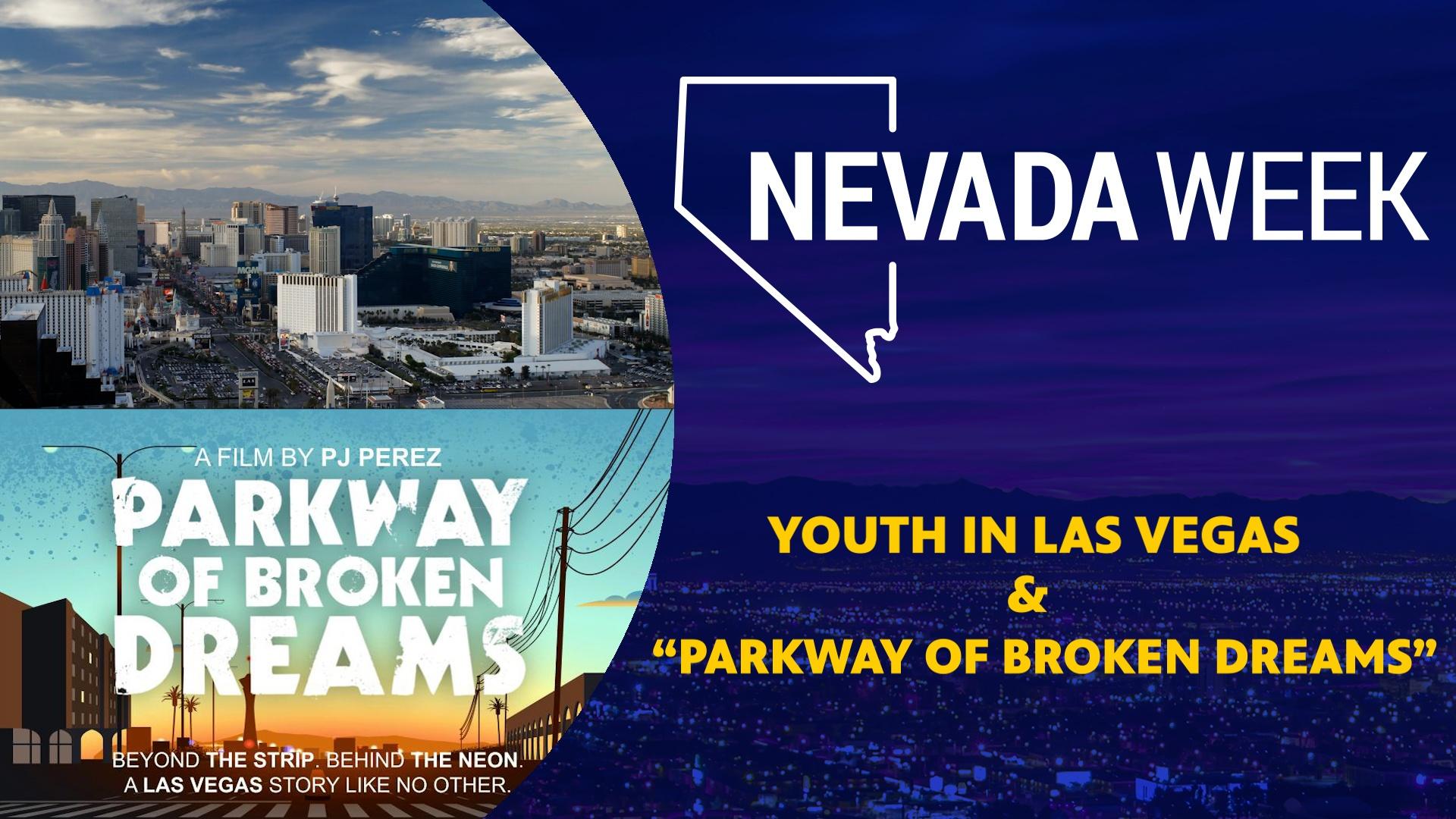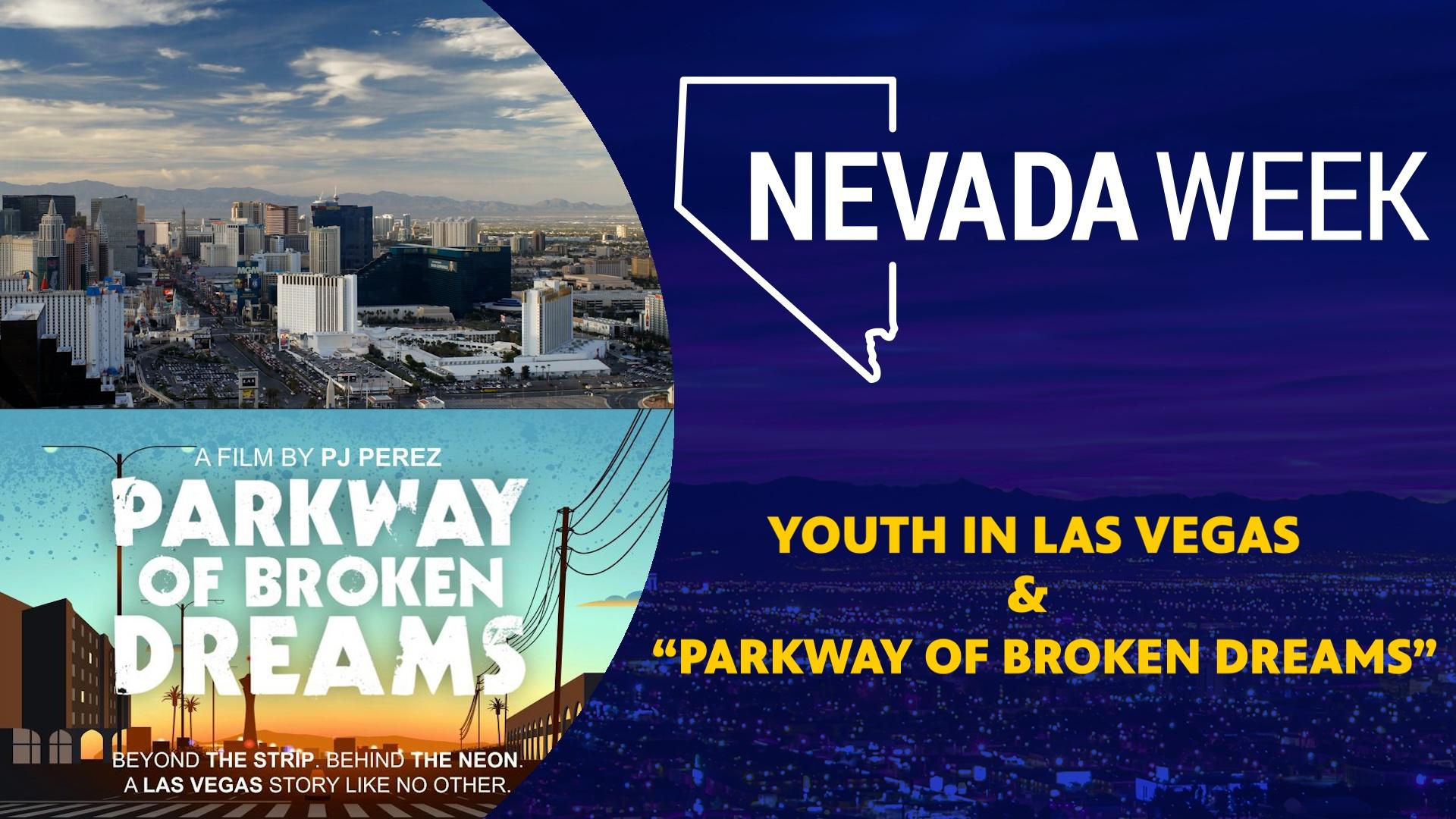Youth in Las Vegas and “Parkway of Broken Dreams” | Nevada Week



SEASON 4: EPISODE 40 | Airdate: 4/15/2022
The pandemic has made some of the serious challenges young people face even more difficult, but there are a number of organizations in Southern Nevada dedicated to helping young people cope and live healthy lives.
Rene Cantu is the executive director of Jobs for Nevada’s Graduates, which pairs students in need with mentors to help them get on a path to high school graduation and into a career path.
Cantu said there is an increased sense of isolation and disengagement in a lot of Southern Nevada’s young people. He said there is high absenteeism, lower grades, and credit deficiencies.
“Kids are in trouble right now and they’re still a great aftermath after COVID,” he said.
Debbie Palacios is the executive director of Communities in Schools of Southern Nevada, which also works directly in schools in Southern Nevada to identify students who need help and provide contacts to organizations that can help.
She said COVID is like a rock that hits a pond and now we’re seeing all the ripples from that rock disrupting so many lives. Palacios said those challenges are being amplified in students who are already facing barriers. Communities in Schools works to find wrap-around services for kids. Palacios noted that kids can’t learn if they’re hungry, worried about housing, or don’t have proper shoes or clothing.
Arash Ghafoori is the executive director of Nevada Partnership for Homeless Youth, which provides emergency housing for kids who are on the street and services to get those kids either back with their families or into stable housing.
He said that there is a sandwich effect going on with many young people right now. First, on the front side, it is a daunting world for young people right now. He said it is disorienting to access even some basic needs like food and shelter.
Nevada Partnership for Homeless Youth is working to find new ways to communicate to those kids in need and using new outreach techniques to help them get their needs met. Ghafoori said homelessness usually happens suddenly and unpredictably with young people.
He said that before the pandemic it was a little easier for them to find resources but since closures and lockdowns it has become a lot harder.
At the same time, from the other side of the equation, young people moving out of homelessness have run into barriers to finding affordable housing. Ghafoori said rent has risen so much over the past two years it is difficult for young people getting out of the shelter and into permanent housing to find something they can afford.
All three organizations are hoping that money from the American Rescue Plan Act, also known as ARPA, will help them in their efforts to improve services for young people. Nevada is getting billions in federal dollars to help address some of the issues created by the pandemic.
“This is really a golden opportunity for us to invest infrastructure and other permanent tools that will stay in our community long past ARPA funding stream,” Ghafoori said.
He would like to see the money channeled to things that will last when the money has dried up. He would also like to see the money go towards deficiencies that organizations like his had even before the pandemic.
Cantu agreed. He believes the money should be spent on increasing capacity in organizations like his to really strengthen the social safety net for Nevada’s young people.
Palacios said her organization is seeing both more kids in need and greater needs from the students they work with. She would like the money to go to increasing the partnerships that help those kids get their needs fulfilled.
PARKWAY OF BROKEN DREAMS
One could argue that right now, the heart of Las Vegas’ arts and culture scene is in downtown Las Vegas, but three decades earlier that distinction belonged to Maryland Parkway. A new film documenting that moment in time called “Parkway of Broken Dreams” aired on Vegas PBS.
Pj Perez directed the film. He was familiar with what was going on along the street. He was a teenager living in Las Vegas when the scene on Maryland Parkway started to really evolve.
“It was all these places that really helped form my identity and I think the identity of a lot of people that I have met through that,” he said, “Everyone was just creating this kind of cultural thing and no one really had a definition for it.”
The idea for the film started out of an oral history project he did for the Las Vegas Weekly back in 2006, just after UNLV had announced plans to create what it called Midtown UNLV, which would be a section of Maryland Parkway that would feature coffee shops, record stores and a lot more.
Perez said the idea sounded like what he had experienced along the street in the early 90s. After writing the article, he received a lot of feedback from people who had experienced that era and connected with his article. The film grew from there.
One of the biggest obstacles to creating the film is the lack of archival video. As Perez noted, people didn’t carry around a video camera in their pocket as they do now. So to get video for the film, he reached out to Facebook groups, old friends, UNLV and anyone else who heard about the project.
“It was hard but also surprisingly easy,” he said of getting footage for the film.
The name of the film is taken from “Boulevard of Broken Dreams,” a 2004 song from Green Day. But Perez believes the film reflects the feeling that the group of artists, poets, writers, musicians and more who populated the area were “really doing something” and “building something unique.”
But by the end of the 90s, much of the Maryland Parkway scene had melted away. Downtown had become the focus and the population of Las Vegas couldn’t support two cultural scenes. Plus, how people listened to music changed – CDs and records were out – downloads and IPods were in. And, how young people connected had changed. You log onto a chatroom instead of going to a local coffee shop to find people.
Perez said ultimately his film serves two main purposes:
‘It’s a celebration of an era but it’s also a reminisce of what could have been,” he said.
